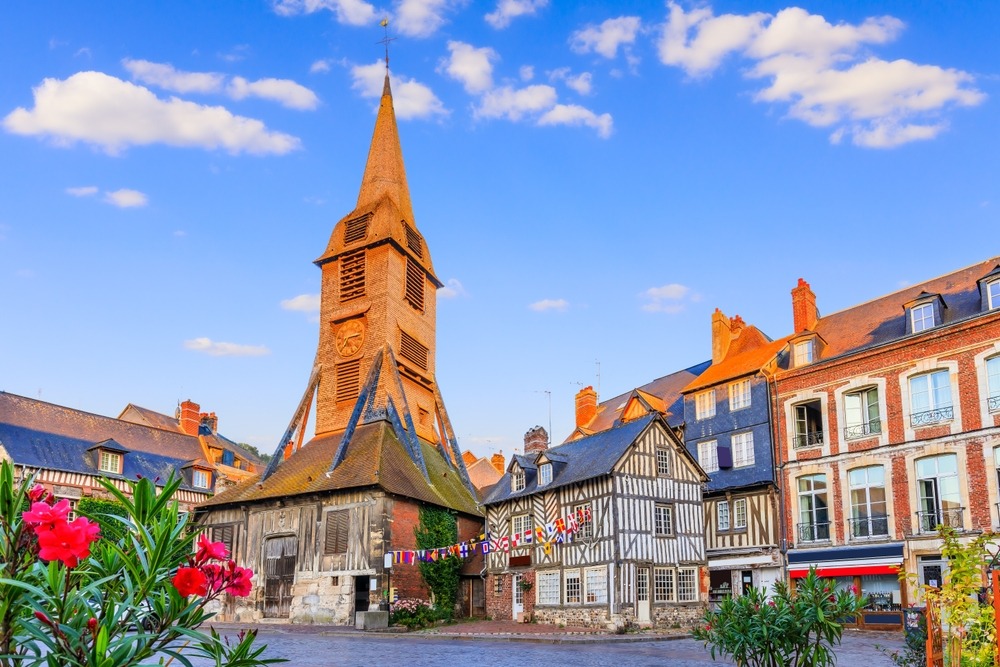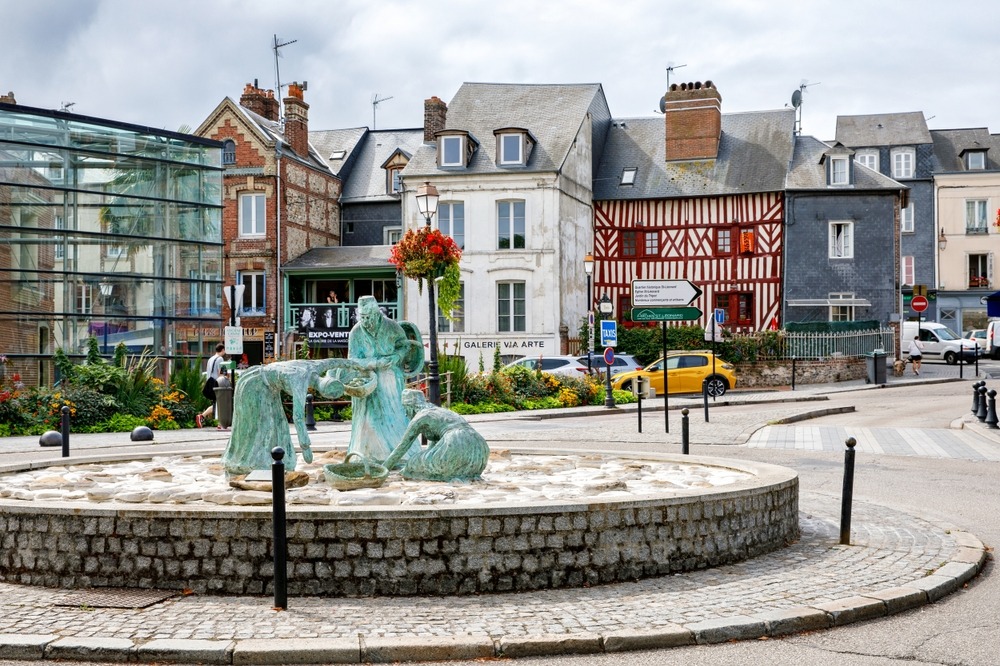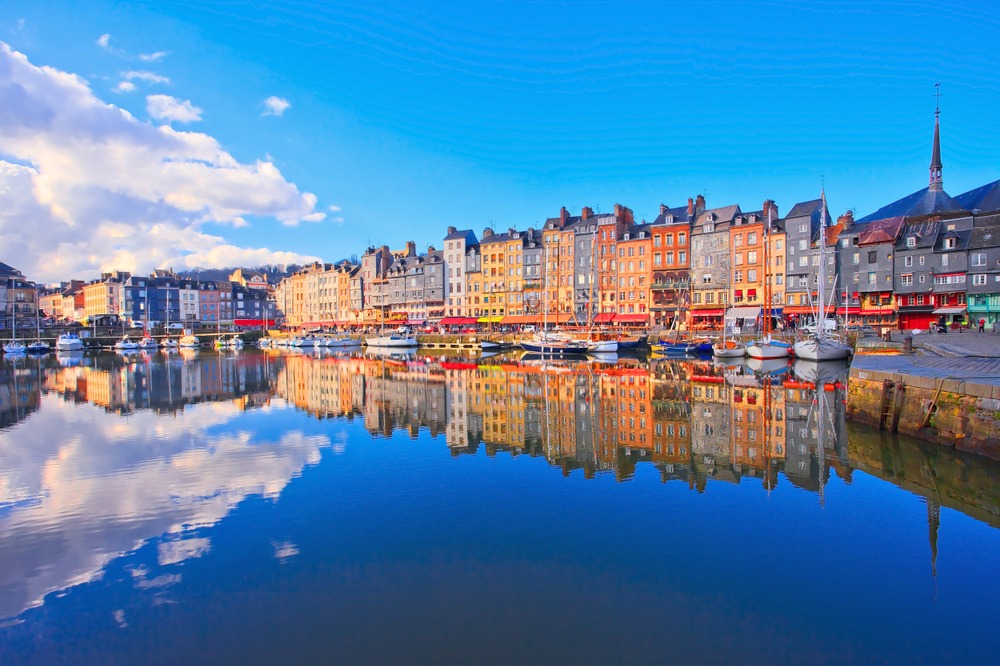Honfleur, France: A Jewel of Normandy’s Coast – History and Top 25 Attractions

A DETAILED HISTORY OF HONFLEUR
Early Foundations and Medieval Development
Nestled along the southern bank of the Seine estuary, where the river meets the English Channel, Honfleur is one of the most picturesque and historically rich port towns in Normandy. The first official mention of Honfleur dates back to 1027, in documents issued by Duke Richard III of Normandy. The town’s strategic location opposite Le Havre and near Rouen established it early on as a maritime hub, protected by natural harbors and cliffs.
By the 12th century, Honfleur had become a fortified port, playing a crucial role in maritime trade and military operations. It thrived under the Dukes of Normandy and later the French crown, exporting wood, salt, wine, and wool to England and the Low Countries. Its position also made it a target during the Hundred Years’ War, leading to repeated English occupations and reconquests between the 14th and 15th centuries.
Renaissance and Maritime Glory
Honfleur flourished during the 16th and 17th centuries as a key port in the Atlantic and colonial trade networks. It was from Honfleur that several exploratory expeditions were launched, most notably that of Samuel de Champlain, who sailed from here in 1608 to found Québec City and lay the foundation of New France (Canada). Champlain’s legacy remains deeply embedded in Honfleur’s identity, with statues, plazas, and educational programs in his honor.
During this era, Honfleur also developed its iconic Vieux Bassin (Old Harbor), lined with tall, narrow townhouses that reflected the wealth and elegance of the time. The harbor bustled with merchant ships, fishermen, and naval activity.
18th–19th Centuries: Decline and Artistic Renaissance
As larger ports like Le Havre expanded and overtook Honfleur in scale, the town saw a decline in commercial power by the 18th century. However, this economic slowdown preserved much of Honfleur’s architectural charm and allowed it to escape industrial modernization.
In the 19th century, Honfleur experienced a remarkable cultural and artistic rebirth. The town became a haven for artists inspired by its natural light, water reflections, and coastal beauty. Honfleur is considered a birthplace of Impressionism. Notable painters such as Eugène Boudin (born in Honfleur), Claude Monet, Gustave Courbet, and Johan Barthold Jongkind congregated here, forming the École de Honfleur, which predated the formal Impressionist movement.
20th Century and Modern Tourism
Despite being near the front lines of both World Wars, Honfleur was largely spared destruction. Its well-preserved harbor, medieval architecture, and artistic legacy drew increasing numbers of tourists in the postwar period.
Today, Honfleur is one of the most visited towns in Normandy. It balances its identity as a living community with the charm of a maritime museum, an open-air gallery, and a coastal retreat. With its cobblestone lanes, wooden churches, vibrant art scene, and seafaring heritage, Honfleur remains a romantic and inspirational destination.

TOP 25 ATTRACTIONS IN HONFLEUR
1. Vieux Bassin (Old Harbor)
The heart of Honfleur, this 17th-century harbor is lined with pastel-colored townhouses and lively cafes. The reflections of the buildings on the water have inspired generations of painters.
2. Église Sainte-Catherine (Saint Catherine’s Church)
The largest wooden church in France, built by shipwrights in the 15th century. Its twin naves resemble inverted boat hulls, and its separate wooden bell tower adds to its rustic Norman charm.
3. Musée Eugène Boudin
This museum celebrates Honfleur’s native son, Eugène Boudin, a precursor to Impressionism. The collection includes works by Boudin, Courbet, Monet, and other painters of the Honfleur school.
4. Greniers à Sel (Salt Warehouses)
Two massive stone buildings from the 17th century once used to store salt for the cod fishing industry. Today they serve as event venues and host cultural exhibitions.
5. Lieutenancy (La Lieutenance)
A historic building at the entrance to the old harbor, once the residence of the King’s Lieutenant. Its archway and medieval architecture mark the former city gates.
6. Jardin des Personnalités
A beautiful garden along the Seine estuary featuring busts of notable figures connected to Honfleur, such as Champlain, Boudin, and Erik Satie. The manicured paths and water views are ideal for a peaceful walk.
7. Église Saint-Léonard
A lovely Gothic church with a flamboyant façade and beautiful stained glass windows. It is older than Sainte-Catherine and features a Renaissance-style bell tower.
8. Naturospace – Honfleur’s Butterfly House
A tropical indoor greenhouse housing hundreds of live butterflies, exotic birds, and lush flora. An educational and sensory experience, perfect for families.
9. Maisons Satie (Satie House and Museum)
A whimsical, interactive museum in the birthplace of avant-garde composer Erik Satie, combining music, art, and multimedia to tell the story of his eccentric genius.
10. Quai Sainte-Catherine
The quay is the most photographed spot in Honfleur. It’s a delightful place to stroll, dine, or simply watch the boats and artists at work.
11. Mont-Joli Viewpoint
A scenic overlook offering panoramic views of Honfleur’s rooftops, harbor, and the Pont de Normandie. It’s accessible by foot through picturesque uphill lanes.
12. Pont de Normandie (Normandy Bridge)
A modern engineering marvel visible from Honfleur, this cable-stayed bridge spans the Seine estuary and connects Honfleur to Le Havre. It is one of the longest of its kind in Europe.
13. Maritime Museum (Musée de la Marine)
Housed in a former church, this museum explores Honfleur’s seafaring past through ship models, navigational instruments, and maritime artifacts.
14. Market Square (Place Sainte-Catherine)
A vibrant space near the wooden church, hosting weekly markets with fresh seafood, Norman cheeses, produce, and local crafts.
15. Rue du Puits
One of the most charming streets in Honfleur, lined with half-timbered houses, boutiques, and artist studios.
16. Chapelle Notre-Dame-de-Grâce
Located on the Côte de Grâce hill just outside town, this small chapel dates to the 17th century and features votive offerings from sailors, model ships, and bells. The terrace offers stunning views over the estuary.
17. Plateau de Grâce
The hilltop area surrounding the chapel includes a panoramic viewpoint, wooded trails, and picnic areas, making it a lovely place to take in sea breezes.
18. Honfleur’s Beaches
While not the town’s main draw, the small beaches along the Seine River are perfect for quiet relaxation, especially near Butin Beach.
19. L’Estuaire Walkway and Port de Plaisance
A modern marina and waterfront trail leading out toward the sea, where visitors can observe boats, sea birds, and the tidal landscape.
20. Musée d’Ethnographie
A local history museum set in a 17th-century townhouse, with rooms recreating traditional Norman interiors, crafts, and daily life.
21. Calvaire des Marins
An old mariner’s monument located on the heights above the town. It commemorates lost sailors and is surrounded by wildflowers and walking paths.
22. Ferme Saint-Siméon
A former inn-turned-luxury hotel where Boudin, Monet, and other artists once gathered. Visitors can still dine here and experience its historical ambiance.
23. La Forge Art Gallery
A vibrant gallery showcasing contemporary and regional artists, set in a former forge building with ironwork and sculptures.
24. Le Vieux Clocher (The Old Bell Tower)
Part of the Sainte-Catherine complex, this freestanding wooden bell tower was built separately due to fire risk. Visitors can explore its unique wooden structure and views.
25. Honfleur’s Culinary Scene
The town’s many restaurants and crêperies offer Norman specialties such as camembert, cider, calvados, moules marinières, and apple tarts. Dining here is an experience in itself.

Honfleur is a rare gem—a place where time, art, and the sea converge. From its medieval streets and wooden churches to the reflections in its harbor that once captivated Monet and Boudin, the town is a living canvas. Whether you’re tracing the footsteps of explorers and Impressionists, strolling among half-timbered homes, or savoring Norman cuisine by the waterfront, Honfleur offers a rich, layered experience that enchants every visitor. It is a must-see destination not just in Normandy, but in all of France.

































